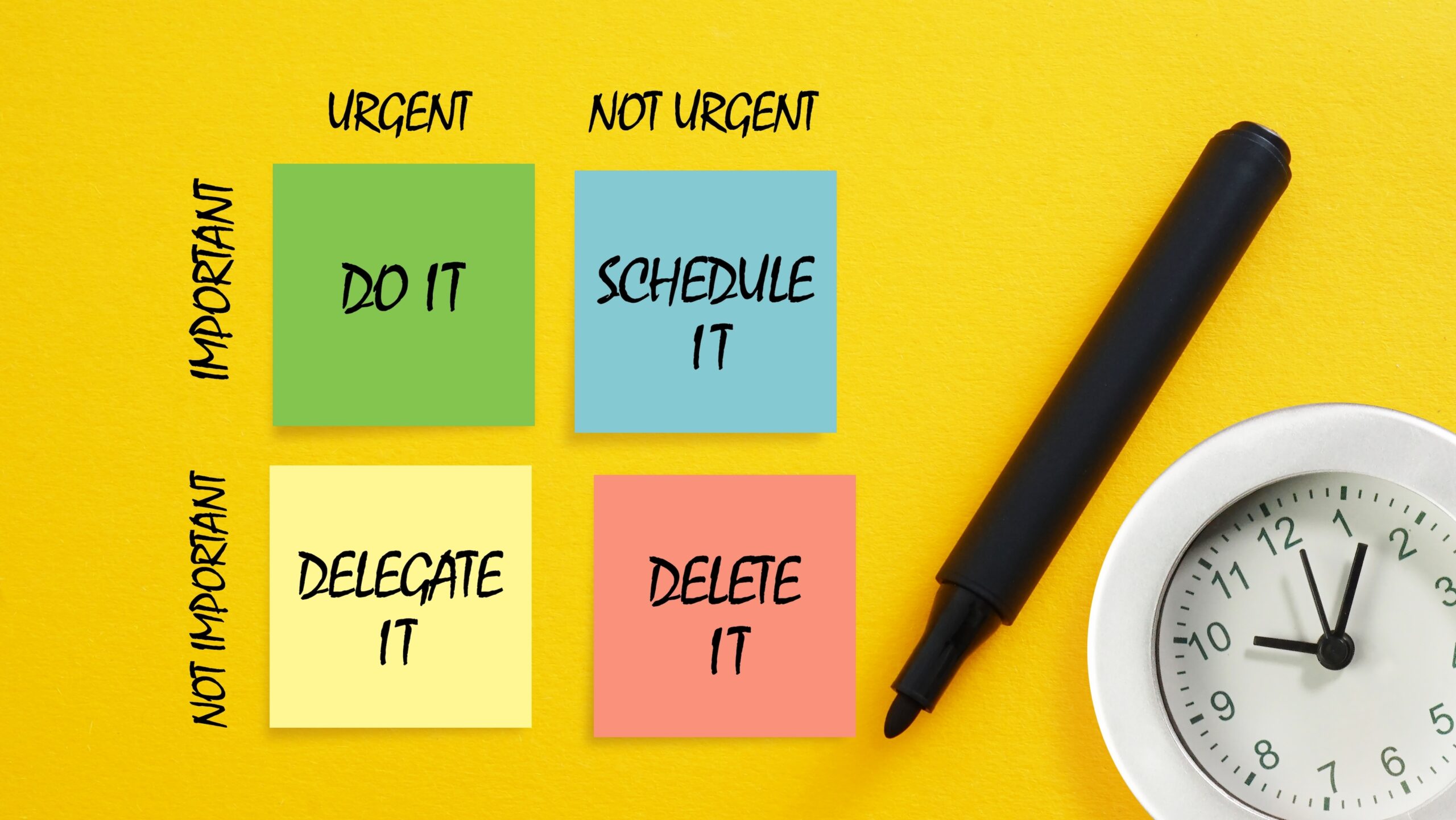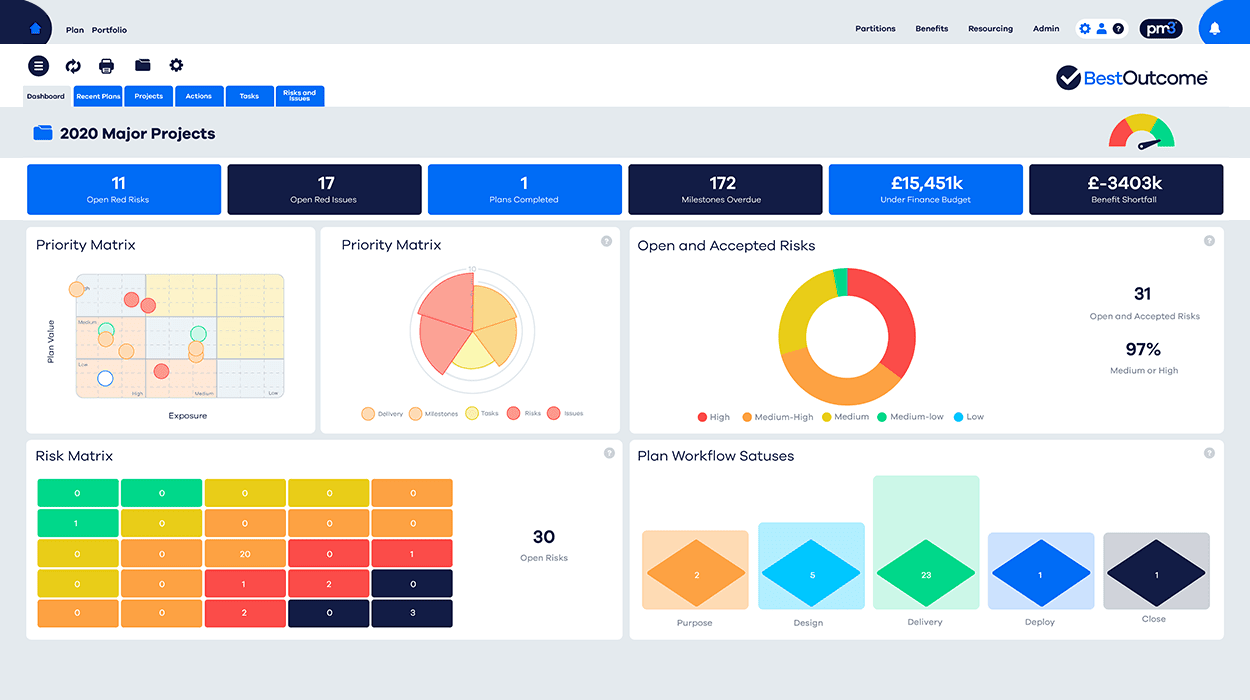In today’s demanding workplace, knowing how to prioritise workload is essential. With too many tasks competing for attention, the ability to focus on key tasks can be the difference between staying in control and falling behind.
Whether you’re leading a big project, juggling weekly tasks, or dealing with tight deadlines, learning to prioritise tasks effectively is the difference between staying in control and falling behind.
This guide shares 12 proven techniques for tackling urgent and important tasks, managing complex tasks, and staying productive without burning out. Each strategy will help you focus on key tasks, complete work on time, and reduce the risk of missed deadlines.

One of the fundamental steps in mastering the art of workload prioritisation is to create and maintain a well-structured task list. For anyone wondering how to prioritise workload, this list becomes the first practical step toward managing all the tasks on your plate with clarity and confidence.
Think of it as a list of tasks that guides you through the maze of commitments that make up your work day.
This list becomes the foundation upon which you build your daily, weekly tasks and long-term plans, making it a pivotal tool for successful project management and effective time management.
But what exactly makes a to-do list so indispensable?
A central hub for tasks
By consolidating all your tasks in one place, a task list allows you to centralise your efforts.
You no longer need to rely on memory or scattered notes, which can lead to confusion and overlooked items. Instead, every task – no matter how complex or simple – finds a home on your task list, ensuring nothing slips through the cracks.
Prioritisation at your fingertips
Creating a to-do list isn’t just about jotting down tasks; it’s also a powerful tool to prioritise tasks effectively.
You can assign levels of urgency and relative importance to each item, giving you a clear sense of which key tasks need immediate attention and which can be addressed later. This simple act of ranking tasks helps you focus on the most crucial work, ensuring that the actual work that drives results doesn’t get lost in the shuffle.
Effective time management
A well-maintained task list plays a vital role in effective time management. It allows you to allocate your time efficiently, ensuring that you’re dedicating your most productive hours to the key tasks that matter most.
As you complete tasks and mark them off, you gain a sense of accomplishment and control over your workload, which can be motivating and help you maximize productivity.
Flexibility and adaptation
In the ever-evolving landscape of project management, your task list offers adaptability.
As new tasks arise or circumstances change, you can easily update your list to reflect current priorities. This flexibility ensures that you can navigate unexpected challenges, rebalance your workload, and adjust your focus without losing sight of your key elements.

To prioritise your workload successfully, it’s crucial to distinguish between important and urgent tasks.
You can use the Eisenhower Matrix, a powerful tool that categorises tasks into four quadrants based on their importance and urgency.
This matrix will guide you in deciding which tasks require immediate attention and which can be deferred by dividing tasks into four distinct quadrants, each representing a specific priority level:
Quadrant 1: Important and urgent (Do first)
Tasks in this quadrant are both important and require immediate attention. They are often critical, time-sensitive and directly impact your project’s success.
Addressing these tasks promptly is crucial to prevent crises and maintain control.
Quadrant 2: Important but not urgent (Schedule)
Tasks in this quadrant are important but do not demand immediate action. They are often related to strategic planning, long-term goals and proactive measures.
By scheduling these tasks, you can prevent them from becoming urgent in the future and create a more manageable workload.
Quadrant 3: Not important but urgent (Delegate)
Tasks in this quadrant are urgent but not necessarily important. They often involve distractions or activities that could be delegated to others. While they may require your immediate attention, they don’t contribute significantly to your project’s overall success.
Delegation is a key strategy for managing these tasks.
Quadrant 4: Not important and not urgent (Eliminate)
Tasks in this quadrant are neither important nor urgent. They represent time wasting activities, distractions, or unnecessary work. It’s advisable to eliminate or minimise these tasks from your workload to free up time and focus on what truly matters.
 Timesheet tools: How they improve productivity and reduce costs
Timesheet tools: How they improve productivity and reduce costsLearn more about how timesheet tools can streamline reporting and reduce wasted resources.
For time-sensitive tasks, be sure to assign clear due dates. When you’re learning how to prioritise workload, setting deadlines is one of the most effective ways to stay on top of commitments and avoid last-minute rushes.
Time-sensitive tasks are those that have specific tight deadlines or require immediate attention. They often include project milestones, client deliverables, or critical administrative responsibilities that must be treated as urgent and important tasks.
Setting due dates is a strategic move that empowers you to stay organised and meet your commitments. Here’s why:
● Preventing procrastination: Due dates serve as an accountability tool, reducing the likelihood of procrastination. When a task has its own deadline, you are more likely to complete tasks in a timely manner and keep projects on track.
● Maintaining order: Due dates contribute to maintaining order within your project management workflow. They enable you to sequence tasks appropriately and ensure that one task’s completion doesn’t hinder the start of the next.
● Stakeholder expectations: In professional environments, setting due dates helps manage expectations. This provides clarity on when deliverables will arrive, building transparency and trust.
● Project predictability: By assigning due dates and regularly reviewing progress, you enhance the predictability of your project’s timeline. This is vital for effective project management, avoiding unrealistic deadlines, and ensuring client satisfaction.
● Boosting efficiency: Consistently working with defined due dates allows you to focus on high-priority items first, helping you maximise productivity while keeping stress levels low.
High-priority and top-priority tasks are the urgent and important tasks that demand your immediate attention. Focusing on them will help you allocate your time and energy efficiently, which is a critical part of learning how to prioritise workload in a structured way.
To master this key element of workload prioritisation, it’s essential to understand the concept of a priority list and how it can guide you to prioritize tasks effectively when you’re faced with too many tasks competing for your attention.
A priority list is a structured inventory of your workload, organised by the relative importance of each item. This method allows you to separate key tasks that contribute to meaningful progress from less critical activities that can wait. By sequencing your work this way, you ensure that the actual work driving outcomes gets completed first while less pressing tasks are scheduled later.
Here’s how a priority list can help you manage high-priority and top-priority tasks effectively and consistently complete tasks on time:
● Clarity and focus: A priority list offers clarity, ensuring that you know precisely what needs to be accomplished. It keeps you focused on the most crucial tasks, reducing the risk of getting side-tracked by less important activities.
● Sequencing tasks: By organising your tasks based on priority, a priority list allows you to sequence them logically. This means you can work on high-priority and top-priority tasks before addressing those of lower importance, streamlining your workflow.
● Task juggling: In many project management scenarios, you’ll have to juggle multiple tasks. A priority list helps you manage this juggling act by providing a visual roadmap of which tasks require immediate attention and which can be deferred.
● Resource allocation: High-priority and top-priority tasks often require more resources, such as time, effort, or expertise. A priority list assists you in allocating these resources effectively, ensuring that your project’s critical components receive the attention they deserve.
● Task delegation: For collaborative projects, a priority list can be shared with team members to delegate tasks appropriately. This promotes effective teamwork and ensures that everyone understands which tasks should be tackled first.

One effective way to simplify workload management is to streamline your task list by using templates and workflow automation available in modern project management software. For anyone wondering how to prioritise workload when there are simply too many tasks, automation provides structure and consistency that makes the process easier.
This approach can save valuable time, especially for repetitive or administrative activities, and ensures that every task follows a standard process. By removing the need to reinvent the wheel each time, you can focus your attention on key elements of your actual work, such as delivering outcomes and hitting project milestones.
When paired with BestOutcome’s comprehensive project management software PM3, the benefits are magnified. Templates help you organise weekly tasks, automation ensures that teams complete tasks on time, and workflows create predictable structures that allow you to maximise productivity across projects.
Let’s explore how leveraging templates and workflow automation in PM3 can revolutionise your approach to workload prioritisation:
Template-driven project initiation
PM3 empowers you to create and utilise templates for project initiation. This is invaluable in workload prioritisation as it ensures a standardised and efficient start to each project.
By leveraging templates, you can quickly outline the structure of high-priority tasks, define objectives and establish timelines, eliminating the need to reinvent the wheel with each new project.
Consistent task management
Templates in PM3 extend beyond project initiation to encompass task management.
With pre-defined task templates, you can ensure consistency in how high-priority tasks are created and managed across different projects.
This consistency promotes clarity and helps teams focus on executing important work rather than navigating varied task structures.
Workflow automation for task sequencing
Workflow automation within PM3 allows you to automate task sequencing and dependencies. This is a game-changer for workload prioritisation.
By automating the flow of tasks based on their priority and dependencies, you ensure that high-priority tasks are seamlessly integrated into the project timeline.
This reduces manual effort, minimises the risk of oversights and enhances overall project efficiency.
Automated notification and alerts
PM3’s automation features extend to notifications and alerts. For high-priority tasks, automated notifications can be set up to ensure that relevant team members are promptly informed.
This not only keeps everyone on the same page but also ensures that urgent tasks receive immediate attention, contributing to effective workload prioritisation.
Streamlined decision-making with automated reports
Utilising PM3’s automation capabilities, you can generate automated reports on project progress, resource utilisation and benefits realisation.
This is crucial for workload prioritisation as it provides real-time insights into the status of high-priority tasks.
Automated reports facilitate informed decision-making, enabling you to adapt your priorities based on up to date information.
Resource allocation with workflow insights
PM3’s workflow automation provides insights into resource allocation and workload distribution.
This is crucial for effective workload prioritisation, allowing you to identify resource bottlenecks, ensure optimal allocation for high-priority tasks and make adjustments as needed.
Continuous improvement through template evolution
As you use templates and workflow automation in PM3, you have the opportunity for continuous improvement.
Templates can evolve based on the insights gained from project outcomes. This iterative process ensures that your workload prioritisation strategies become increasingly refined and effective over time.
Team collaboration with template consistency
Templates and workflow automation contribute to effective team collaboration. Consistent templates ensure that team members share a common understanding of task structures and priorities.
Automation streamlines communication and collaboration, fostering an environment where high-priority tasks are efficiently executed.

Project management is often a multifaceted journey that draws on diverse skills, expertise, and perspectives. Knowing how to prioritise workload in this context means recognising that no single person can manage all the tasks effectively on their own.
Collaborating with your team members and stakeholders ensures that no vital aspects or details are overlooked. It harnesses the collective knowledge of various departments and business functions, leading to better decisions and helping everyone prioritize tasks effectively.
Involving stakeholders from the earliest stages of your project not only keeps them informed but also secures their buy-in. When tasks are assigned with a clear understanding of project objectives, priorities, and progress, stakeholders are far more likely to provide the resources and cooperation needed for long-term success.
This type of cross functional collaboration also supports better resource allocation. By involving team members directly in workload prioritisation, you ensure that key tasks align with their skills and expertise. This minimises bottlenecks and ensures that the right people are completing the right work at the right time.
Finally, incorporating the input of both stakeholders and team members creates greater flexibility. If unexpected changes arise—whether it’s shifting priorities, too many tasks landing at once, or new dependencies—the collective wisdom of the group helps adapt quickly and complete tasks without losing momentum.
Small tasks, often referred to as low-priority tasks, are typically routine, mundane activities that tend to accumulate over time. Anyone who has ever wondered how to prioritise workload knows that these small items can quickly stack up into too many tasks, distracting you from urgent and important tasks that actually drive progress.
They can include replying to emails, data entry, or administrative chores—simple jobs that, while not meaningless, can easily overshadow key tasks if left unmanaged. Individually, they may seem insignificant, but together they can delay actual work and prevent you from focusing on activities with greater relative importance.
This doesn’t mean small tasks should be ignored; they still matter. However, they should never take precedence over high-priority items that require you to prioritize tasks effectively and ensure you consistently complete tasks that move projects forward.
To effectively manage small tasks and important work, consider the following strategies:
● Batching small tasks: Allocate specific time blocks in your day to tackle small, low-priority tasks. By batching them together, you minimise disruption and maintain your focus on high-priority work during other dedicated time slots.
● Set limits: Establish boundaries for small tasks. For example, allocate the first 30 minutes of your work day to handle emails and administrative duties, and then shift your attention to high-priority tasks.
● Prioritise high-priority work: Make it a habit to prioritise high-priority work early in your work day when your energy and focus are at their peak.
● Delegate when possible: If you have the opportunity to delegate low-priority tasks to team members or colleagues, do so. Delegation frees up your time to concentrate on crucial project activities.
● Use a priority list: Incorporate a priority list to clearly identify your high-priority work. By having a visual representation of your priorities, this list of tasks can avoid getting lost in a sea of low-priority tasks.
Multitasking is the practice of trying to handle multiple activities at the same time. While many people believe it’s an efficient way to get more done, anyone who has ever asked how to prioritise workload knows that this approach rarely works. In fact, studies consistently show that attempting to multitask effectively is a myth, and the downsides of multitasking are numerous.
Rather than helping you complete tasks faster, constant task-switching can actually reduce productivity. Each time you shift attention between activities, your brain expends valuable energy refocusing, which slows progress and drains efficiency. The result is often missed details, mistakes, and key elements of projects being overlooked.
Multitasking also impacts the quality of your actual work. When you’re spread thin, even urgent and important tasks suffer, because they don’t receive the depth of focus they deserve. Over time, this not only affects your output but can also create a cycle of missed deadlines and lower morale.
On the other hand, single-tasking—the practice of dedicating your full attention to one activity at a time—allows you to dive deeply into your priorities. By focusing on one thing until completion, you create the conditions to maximize productivity, deliver higher-quality outcomes, and build momentum across your workload.
● Enhanced focus: Single-tasking enables you to fully engage with the task at hand, leading to improved focus and attention to detail. This heightened focus is
essential for tackling important work effectively.
● Improved quality: When you dedicate your full attention to a single task, the
quality of your work improves. You’re less likely to make errors and your output
will reflect a higher standard of work.
● Reduced stress: Single-tasking fosters a sense of control and calm. You’ll
experience less stress as you move through your workload, improving your
overall wellbeing.
● Better time management: Single-tasking allows for more efficient time management. By focusing on one task at a time, you can allocate your time and
resources more effectively, ensuring that important work gets the attention it
deserves.
● Increased productivity: While it may seem counterintuitive, single-tasking
actually boosts productivity. By completing one task before moving on to the
next, you’ll experience a sense of accomplishment that motivates you to tackle
the next task with the same level of focus.
● Enhanced project management: In project management, focusing on one task at a time can significantly improve your ability to manage complex projects. It
ensures that you don’t overlook critical details or neglect important components
of the project.
● Better work-life balance: Single-tasking can contribute to a better work-life
balance. By focusing on work when it’s time to work and leaving it behind when
it’s time for personal life, you can create a healthier separation between the two.

Procrastination is a common challenge that can undermine even the best attempts at workload prioritisation and project management. When you’re faced with too many tasks, it’s easy to delay action, especially on complex or uncomfortable items.
Anyone looking for practical advice on how to prioritise workload must also learn how to overcome procrastination, since postponing work often prevents you from tackling urgent and important tasks at the right time.
Addressing procrastination is essential for ensuring that key tasks and actual work don’t get neglected in favour of low-priority distractions. Without a plan, delays can snowball into unrealistic deadlines or even missed deadlines, creating unnecessary stress for both you and your team.
Here are some strategies to tackle procrastination, refocus your efforts, and consistently complete tasks on time while continuing to maximise productivity:
Identify the underlying causes
Procrastination is often a symptom of deeper issues. Identifying these root causes is the first step in overcoming procrastination.
Ask yourself why you’re procrastinating on a specific task: are you overwhelmed by its complexity, or does it lack clear instructions?
Understanding the underlying reasons will help you address the issue more effectively.
Break tasks into smaller steps
Large, daunting tasks are more likely to lead to procrastination.
Breaking them down into smaller, more manageable steps not only makes the work feel less overwhelming but also provides you with a sense of progress as you complete each sub-task.
Set specific goals and deadlines
Vague objectives can lead to procrastination. Set clear, specific goals for each task, and assign deadlines to create a sense of urgency. Specificity and time constraints help in combating procrastination by providing a structured approach.
Use time management techniques
Time management techniques, such as the Pomodoro Technique (working in focused intervals with short breaks), can help you maintain concentration and manage procrastination effectively.
By setting dedicated work periods, you can combat the allure of procrastination.
Create a productive workspace
A cluttered or disorganised workspace can be a breeding ground for procrastination.
Optimise your workspace for productivity, removing distractions and keeping essential tools and resources within easy reach.
Find motivation
Identify what motivates you to complete a task. Whether it’s a sense of accomplishment, rewards, or personal fulfilment, understanding your motivation can help you push through procrastination.
Use the two-minute rule
If a task takes two minutes or less to complete, tackle it immediately. This rule reduces the accumulation of small tasks that can lead to procrastination.
Limit distractions
Identify common distractions and take steps to limit them.
This may involve turning off notifications, setting specific times for checking email or social media, or creating a focused work environment.
Embrace self-compassion
Avoid harsh self-criticism if you catch yourself procrastinating.
Instead, practice self-compassion by acknowledging that everyone experiences procrastination at times, while encouraging yourself to refocus and move forward.
Celebrate small wins
Recognise and celebrate your accomplishments, no matter how small.
This positive reinforcement can help combat procrastination by encouraging a sense of achievement.
 Project Evaluation: A Complete Guide for Managers
Project Evaluation: A Complete Guide for ManagersDiscover how to assess outcomes with confidence in our article on project evaluation.
At the end of each work day, review your accomplishments and make any necessary adjustments to your priority tasks for the next day.
This simple yet effective ritual involves taking a few minutes to reflect on your accomplishments, assess your progress and prepare for the day ahead.
Reflect on achievements
At the end of the day, begin by reflecting on your accomplishments. What tasks did you complete and what milestones did you reach? Acknowledging your achievements, no matter how small, provides a sense of fulfilment and motivates you to continue being productive.
Assess unfinished tasks
Review any tasks that you didn’t complete during the day. Understanding why some tasks were left unfinished can help you identify potential obstacles or areas where you might need to improve your time management.
Update your priority list
Evaluate your priority list and make any necessary adjustments for the following day. As you review your progress, you can identify high-priority tasks that need to be carried over, rescheduled, or reprioritised.
Set clear goals
Before wrapping up your work day, establish clear goals for the next day. These goals should align with your project management objectives and reflect your project’s priorities. Having a well-defined roadmap for the next day ensures that you start each morning with purpose and direction.
Organise your workspace
Take a moment to tidy up your workspace. Organising your physical environment can help create a fresh and inviting atmosphere for the next work day. A clean workspace can also contribute to mental clarity and focus.
Unplug and disconnect
Consider setting boundaries by disconnecting from work-related emails, messages and notifications. This practice fosters a healthy work-life balance and helps you recharge, ensuring you return to your tasks the next day with renewed energy and focus.
In today’s digital age of information overload and constant connectivity, avoiding distractions has become a core skill for anyone learning how to prioritise workload effectively. Without strategies in place, endless pings, emails, and social media notifications can pile on too many tasks, fragment your attention, and quickly reduce productivity.
Distractions not only disrupt focus but also prevent you from giving urgent and important tasks the attention they deserve. Over time, they can slow progress, cause you to overlook key elements of your projects, and even delay actual work that directly impacts results.
To stay focused, complete tasks on time, and consistently maximize productivity, you need clear strategies for minimising interruptions. By creating boundaries, scheduling communication blocks, and regularly reviewing your progress, you’ll be better equipped to protect your priorities and keep your workload on track.
Here are some proven approaches to avoid distractions and maintain control over your workload:
Effective workload prioritisation and project management depend not only on skills and processes but also on having the right tools to support them.
BestOutcome’s PM3 is an outcome-driven portfolio, programme, and project management solution designed to handle everything from simple stand-alone projects to large-scale business change programmes. By helping teams focus on key elements, streamline resources, and consistently complete tasks, PM3 turns theory into practice.
Here’s how PM3 can act as a catalyst to help you prioritise tasks effectively, give urgent and important tasks the attention they need, and maximise productivity while keeping projects aligned with actual work and business outcomes:
Prioritisation and transformation
PM3 is not just a project management system; it’s a comprehensive tool that can handle programmes and portfolios effectively.
The prioritisation features of PM3 enable you to identify and manage high-priority tasks seamlessly.
Whether it’s determining which projects to focus on, optimising resource allocation, or aligning your workload with strategic objectives, PM3 can be your guiding light in workload prioritisation.
Effective resource management
Managing resources is a critical aspect of workload prioritisation.
PM3’s resource management capabilities offer insights into resource availability and allocation, helping you understand where your ‘pinch points’ may lie.
This is invaluable in ensuring that your workload is aligned with the available resources and that high-priority tasks receive the attention and resources they need to succeed.
Agile and waterfall support
In the dynamic landscape of project management, the ability to adapt to different methodologies is vital. PM3 provides support for both traditional waterfall (such as Prince2™) and agile methods.
This flexibility allows you to choose the approach that best suits your project, ensuring that your workload prioritisation aligns with your chosen project management method.
Effective team collaboration
Collaboration is the cornerstone of successful project management.
PM3 facilitates effective team collaboration, allowing dispersed project teams to work together seamlessly.
Team members can use the PM3 software or the PM3Team app for collaboration, ensuring that high-priority tasks receive the collective attention and effort they require.
Dashboards for decision-making
PM3 offers a range of customisable dashboards, containing over 100 out-of-the-box reports and drill-down capabilities.
These dashboards provide insights into project progress, resource utilisation and benefits realisation.
In terms of workload prioritisation, these dashboards allow you to assess the status of high-priority tasks, resource allocation and the overall progress of your projects, enabling data-driven decision-making.
Continuous improvement
PM3’s comprehensive features support not only effective workload prioritisation but also continuous improvement in your project management approach. By harnessing PM3, you can refine your prioritisation strategies, resource allocation and project management methods, ensuring that your projects stay aligned with your goals.
Whether you’re overseeing a small business or extensive projects, PM3 can take your workload prioritisation to new heights and ensure that your project management efforts thrive.
For more information about how PM3 can help your organisation prioritise its workload, schedule a demo now or contact us at sales@bestoutcome.com
Image Sources: Astrid.IQ

Our products help you deliver successful change programmes and projects by always focusing on the overall business outcomes. Find out how our products can help you.
Are you struggling to understand how to plan a project that keeps you and your team on target? In th...
Read more >